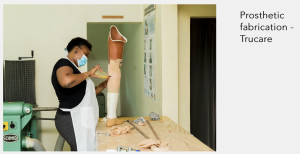Participating in the ONL course has been a transformative experience, especially in redefining how I perceive learning, collaboration, and teaching in digital spaces. One of the most valuable insights I’ve gained is the *possibility of solving problems asynchronously with ease*. In traditional settings, problem-solving often depends on synchronous interactions—being physically or virtually present at the same time. However, through ONL, I experienced how collaborative learning can thrive even when participants engage at different times, across different time zones, and from different contexts.
Asynchronous learning not only offered flexibility but also created space for deeper reflection and contribution. I appreciated how I could return to shared documents, Padlets, or discussion boards at my own pace, consider my peers’ contributions, and build thoughtfully upon them. This made our group work feel both inclusive and effective, fostering a sense of collective ownership. I plan to integrate this model more intentionally in my own teaching, especially for learners who juggle multiple responsibilities or need more time to process complex material.
At the same time, synchronous sessions played an important role in strengthening social presence and building trust. Live discussions, break-out room chats, and feedback sessions brought immediacy and energy, helping us feel part of a dynamic learning community. The balance of asynchronous and synchronous activities is something I want to bring into my teaching practice, ensuring accessibility without compromising human connection.
Another area of growth for me has been understanding and applying different engagement options for sustaining learners’ motivation. In ONL, I witnessed how varied formats visual storytelling, collaborative documents, gamified elements, and personalized feedback could activate participation. Learner autonomy was highly respected, which in turn, cultivated intrinsic motivation. These practices reminded me of the importance of designing learning not just for content delivery, but for continuous engagement, curiosity, and meaning-making.
Going forward, I aim to encourage more sharing in my teaching not just of knowledge, but of experiences, ideas, struggles, and successes. The ONL ethos emphasized co-learning and co-construction of knowledge, and I found that empowering. By creating spaces where learners can teach one another, ask critical questions, and build a community of practice, I hope to support more sustainable and authentic learning journeys.
In summary, ONL has reshaped my approach to education. I now recognize the pedagogical strength of asynchronous problem-solving, the importance of flexible engagement strategies, and the value of collaborative learning networks. These principles will remain central as I continue to develop as both an educator and a learner.



